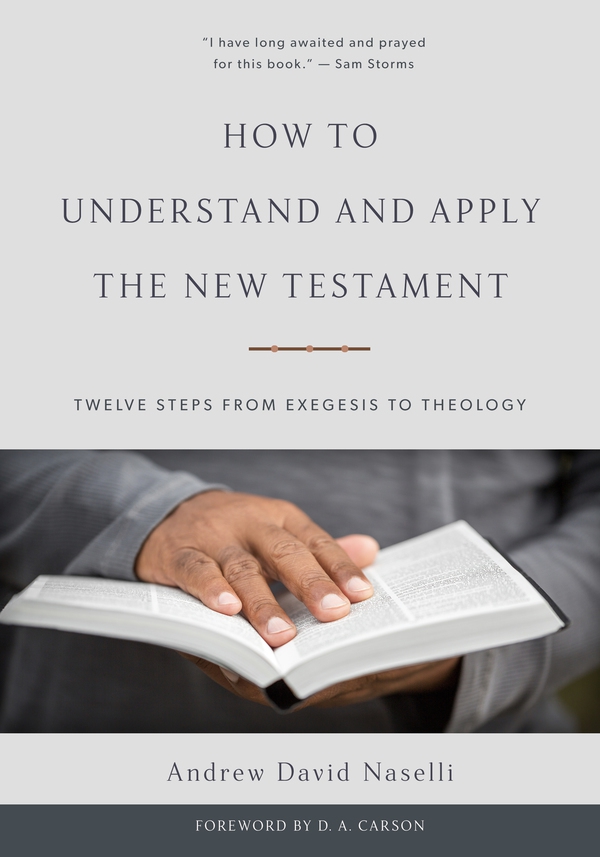How to Understand and Apply the New Testament: Twelve Steps from Exegesis to Theology by Andrew David Naselli

CONTENTS
List of Figures ix
Analytical Outline xi
Foreword by D. A. Carson xxiii
Preface xxv
Acknowledgments xxvii
Abbreviations xxix
Introduction 1
1. Genre
Establish Guidelines for Interpreting a Passage’s Style of Literature 15
2. Textual Criticism
Establish the Original Wording 36
3. Translation
Compare Translations 50
4. Greek Grammar
Understand How Sentences Communicate by Words, Phrases, and Clauses 82
5. Argument Diagram
Trace the Logical Argument by Arcing, Bracketing, or Phrasing 121
6. Historical-Cultural Context
Understand the Situation in Which the Author Composed the Literature and AnyHistorical-Cultural Details That the Author Mentions or Probably Assumes 162
7. Literary Context
Understand the Role That a Passage Plays in Its Whole Book 188
8. Word Studies
Unpack Key Words, Phrases, and Concepts 206
9. Biblical Theology
Study How the Whole Bible Progresses, Integrates, and Climaxes in Christ 230
10. Historical Theology
Survey and Evaluate How Significant Exegetes and Theologians Have Understood the Bible and Theology 264
11. Systematic Theology
Discern How a Passage Theologically Coheres with the Whole Bible 283
12. Practical Theology
Apply the Text to Yourself, the Church, and the World 309
Conclusion – Look at the Book! 332
Appendix A – Why You Should Organize Your Personal Theological Library and a Way How 335
Appendix B – Why and How to Memorize an Entire New Testament Book 338
Glossary 343
Selected Bibliography 351
Index of Scripture 367
Index of Subjects and Names 373

Comments